Of Owls and Gerbils
From: Lara
To: Dr. Abraham
Subject:Â Owls
Dear Dr. AbrahamMy name is Lara and I am ten years old, my birthday is in August. I live in the United States. I absolutely LOVE owls and I just wanted to find a scientist or ecologist who knows a lot about birds of prey, especially owls – if your the right person.
I wanted to ask some questions about an owl’s diet and what they eat, behavior, habitat and really cool facts, if you’re not busy and if you have a little free time to write back.
(My e-mail address is: [Redacted])
(you can make these questions pretty brief if you want, I don’t care).Question 1: I see you have made a page about gerbil’s behavior when owls are near them or something. I’m sort of wondering about that. Could you tell me some things you and others have discovered with that?
Question 2: Could you give an estimate on how many owls there are in Israel, and what is the most common reported type/breed of owl?
Question 3: What’s it like to be an owl scientist or ecologist? What are you working on now?
I guess that’s all I’ll do for now. I am excited to hear from someone who studies birds of prey and information about them. I hope you can write back soon, Dr. Abraham!
From, Lara D.
From: Nufar
To: Lara
Subject:Â OwlsDear Lara,
Sorry for the late replay, it has been a busy month :)
Prof. Abraham is my advisor and he shared your questions with me.
You asked:
Question 1: I see you have made a page about gerbil’s behavior when owls are near them or something. I’m sort of wondering about that. Could you tell me some things you and others have discovered with that?Question 2: Could you give an estimate on how many owls there are in Israel, and what is the most common reported type/breed of owl?
Question 3: What’s it like to be an owl scientist or ecologist? What are you working on now?
I would like to answer you as best I can.
To answer your first question: I work with barn owls (I attached a picture of me with Banzai the owl) in my PhD research. I study how owls and gerbils affect each other- how owls hunt the gerbils and what the gerbils do to outsmart the owls.
Lets start the story from the owl’s side:Â Owls are stealthy predators, you could say they ambush from the sky. They have special feathers, with soft edges that do not make noise in the wind of the beating wings. Take a piece of paper and wave it in the air- you hear the sound of the wind? an owl feather does not make this sound. Owls are also very good at sitting quietly on a high branch and just watch the ground for long times, maybe even 40 minutes without moving more than their heads. Their heads can move in a larger circle than ours. They can turn to see behind their backs! So they do not need to move their whole body to be able to search a big circle around where they sit. That way they minimize their chances of being discovered by the gerbils, because it is easier to see something in the dark when it is moving a lot.
Owls have good night vision, but their real wonder is the shape of the owl’s face. You can see in the picture I sent you the heart shape of the face- each half of the heart serves as a big satellite dish funneling the sounds to the owl’s ear hole. Owls are so good at hearing that they can find a gerbil in total darkness just by listening to it move.
So the owl sits very quietly and wait until it finds a gerbil, and then it swoops on the gerbil very quietly and very fast and if it is a good hunter and with a little bit of good luck it will get to eat dinner. It is surprising how many times owls have to try each night until they get the gerbils. Hunting is not easy even when you are such a magnificent predator. Owls work hard every night to get their food, because their food can run away and be smart about it.Now let me tell you the side of the gerbils in this story:Â Gerbils need to look for food in the night. They dig in the dune sand for seeds and when they find them they eat some and stuff some of the seeds in their mouth to carry back to the safety of the burrow where the owl cannot get them. Because the seeds are in sand they cannot simply take them all, they have to search for them and its hard work and it gets harder the more seeds they take- because they get the easy ones and the ones left are always harder to find – they do not have sieves so they smell them and dig with their little paws. At one point it becomes so hard that they prefer to go somewhere else where there are some easy seeds to find.
Gerbils fear the owls and they prefer to look for seeds under bushes where the owl will not be able to swoop on them from the sky because the bush is in the way. This means the seeds under the bushes are eaten first and the gerbils who are still hungry have to go into the open area between bushes to look for more. So gerbils have to decide between staying safe and hungry or risk predation but get the food- we call this a trade-off of food and safety. Gerbils know the open is risky so they try to spend as little time in it as they can.
So gerbils have two behavior tools to avoid the risk of being eaten: habitat selection and time allocation. Habitat selection is choosing where to look for seeds – safer places more than risky places -Â time allocation is how much time to spend in safe and risky places – spend more time in safe and less time in risky.We found this out by giving gerbils food trays with seeds mixed in sand, and we placed these trays under bushes and in the open, on special antennas that track how much time gerbils spend in the trays. In the morning, after the gerbils foraged in the night, we sieved the sand and discovered how much seeds the gerbil took from the trays under bushes and in the open, and we checked how much time they spent in each tray- these are our experimental results. We did it again with an owl in the area- and checked how the presence of the owl changed what the gerbils do by how the results changed. Without an owl gerbils like the bush better than the open, because they do not like to take risks and they do not know for sure that there are no predators around. They still foraged in the open, but somewhat less than the bushes. With an actual owl in the area trying to hunt them they avoided the open areas nearly completely! and invested much more time and effort to get much more of the seeds in the bush trays. So when the owl was around the gerbils were willing to work much harder to get the seeds in the bush instead of going into the open and risk being eaten. However some gerbils were hungry and desperate enough to risk it anyway- that is why we found that they did forage in the open trays. You see how the trade-off is food and safety work?
Gerbils have even more behavior tools to try to avoid being eaten- even during actual foraging- when they found the food and they are busy collecting it, they can save some of their attention to sneak peeks around them to try and find the owl in the sky. This is called vigilance and apprehension- they are not completely focused on gathering the food, so they are less efficient and it takes them longer to get the same amount of seeds than if they were not vigilant, but it can save their lives if they find the owl in time and manage to run away.
Now once more back to the owls: The owls also have behavior tools of habitat selection and time allocation- deciding where, when and for how long to look for gerbils. When the owl is hunting the gerbils is scares them and they use those behavior tools I told you about – to avoid being eaten. So it is easier for the owl to catch a gerbil that is not afraid. Gerbils relax after a long time with no owl in the area- you can’t stay worried forever if nothing scary happens.
The owls can use this fact to their advantage. An owl prefers to hunt in big territories so that by the time it gets back to a place it hunted in, the gerbils have had the time to relax and became easier to catch again. When the owl hunts in a place the gerbils become more and more scared until it is too much work to try and get them.
So owls choose where to hunt (habitats selection) and they choose how long to stay (time allocation) according to how scared the gerbils are in that area.We found this out by allowing an owl to choose where to hunt between two places- one where another owl already visited the place, and another place where no predator was allowed near the gerbils. The owl directed more of its attacks to that place, and spent more time perching and observing the place with the gerbils who were not exposed to a predator yet. So we understood that the owl preferred to hunt the less scared gerbils.
I hope you see by now how, in the grand quest of finding dinner, the owls and the gerbils try to outsmart each other by choosing where, when and for how long to forage.
If you are interested I will tell you how the phases of the moon affect the story, why gerbils horde treasures, and what happens when there are more than one species of gerbil in the area.To answer your second question:
Barn Owl(Tyto alba is its academic Latin name) are the most common owls in Israel. They belong to the Family: Tytonidae from the Order: Strigiformes and they are the only species from that family that live in Israel.
There are 12 other species of owls in Israel of the same Order but from a different family- Strigidae. They are known as  Typical owls and they are not white. here is a list of their names, english and academic Latin, with links if you want to know more about them:
- Pallid Scops-Owl - Otus brucei
- African Scops-Owl - Otus senegalensis
- European Scops-Owl - Otus scops
- Oriental Scops-Owl - Otus sunia
- Eurasian Eagle-Owl - Bubo bubo
- Pharaoh Eagle-Owl - Bubo ascalaphus
- Brown Fish-Owl - Ketupa zeylonensis (A)
- Tawny Owl - Strix aluco
- Hume’s Owl - Strix butleri
- Little Owl - Athene noctua
- Long-eared Owl - Asio otus
- Short-eared Owl - Asio flammeus
Interesting story: Two of my friends are bird ringer- people who catch birds alive, place a ring with serial number on them and release them back to the wild in hope that they will be caught again somewhere else in the world and by their ring we will find out things like how far they can fly, what countries they pass through and how old they can grow. This is how they discovered that young owls can travel as much as 40 Kilometers (25 miles) before they settle down, but if conditions are good and there is plenty of food, for example near a wheat field with lots of mice, than the barn owls can nest as close as 10 meters apart (30 feet). Our farmers use Barn owls for pest control- building them nest boxes near fields and enjoy their hunting of the mice that eat the wheat. You can see pictures and read more about it here:Â http://www.birds.org.il/743-en/Birding-Israel.aspx
My bird ringing friend told me its hard to estimate how many nocturnal animals there are. His best guess is about 10,000 barn owls in all of Israel, but no body knows for sure, it is definitely a great question to ask and one that scientists may yet find the answer to, one day.To answer your third question: It is great fun to work with owls, they are wonderful animals, sometimes very funny, sometimes simply amazing, and always beautiful. I love the feeling of finding answers to questions I am passionate about. I really want to know how owls make their choices when they look for gerbils. How do they know where to hunt, what they think about their environment- what they like more and what they try to avoid. I want to understand how the world looks to an owl, to try and understand the experience of living in a different world from mine, because I do most of my activity in the day and the owl do most of its activity in the night.
Sometimes in research there are long work hours – like if I need to watch 2 hours of video of the owl and write everything it does. It can be tiring work, because it is hard to stay focused for so long. The good part is I get to actually see what is happening, and sometimes to discover surprises that are amazing and even hilarious- for example, one time I saw an owl landing next to a bush and by walking it sneaked under it to scare the gerbils who thought they were well hidden. It was the most funny thing ever, and on top of that, no one saw owls walking like that before.
In science, like everything in life, there are things you like doing more and things you like doing less. It is important to find what you want to do that is so wonderful that you do not mind doing the less interesting parts in order to make sure you get high quality results. I would love to tell you more if you are interested but this email is really long already.
Please feel free to email me about anything :)
Thank you for reading this much.
– Nufar B.
From: Lara
To: Nufar
Date: Apr 11th, 2012
Subject:Â OwlsDear Nufar,
Thank you SO MUCH for responding to my earlier message!
It’s fine if you reply later, I knew you might have been busy. It’s the same for me too. School is great, but I sometimes forget to check my e-mail. I only check it maybe once a week, so sorry about that.
It is very interesting to hear about the two different sides, the owl and the gerbil. I didn’t know it can be a real tough time for the owl to catch a gerbil. Gerbils can be very smart, I’ve heard. How is Banzai the Barn owl? I saw the picture, it’s very cute of you and him/her?
I now get it, the trade-off, it’s sort of like the difficulties and strengths the prey and predator go through, right? Â It is amazing how smart birds of prey and rodents as well can be. It is so cool how the owl realizes that it should go for a less scared gerbil in order to get a pretty successful dinner.
I hear some of your friends are bird ringers – that really seems like an interesting job, It would be fun, too. Do you think they get a lot of knowledge from just putting a serial number on them, and tracking them down to see what they’re up to? I think you could, considering the fact that you found out that young owls can travel as much as 40 kilometers before they settle down, that is pretty fascinating! And also with good conditions and lots of food, they can nest 30 ft. apart! Is that it!? Only 30, that is incredible!
About question three, “What’s it like to be an owl scientist?” I loved your reply to that. I just about have those same thoughts, too. I wonder facts about them, and like you said, I sometimes have difficulties just picturing what it would be like to be living the life of an owl. You would have to be nocturnal, and have to be sneaky with a gerbil-dinner. But, it can also be fun, You know….  TO FLY! You know, I can hardly imagine me flying, although I would absolutely love to!
When I finished looking your letter through, I read some parts of it to my mom, and we both also liked the part where you said “it is important to find what you want to do that is so wonderful that you do not mind doing the less interesting parts in order to make sure you get high quality results.”. I like that quote, and I agree it is important because (this is an example from my life), I really like all my friends in school, and my teachers, and getting to be with them is always a pleasure. But on the other hand, I don’t really enjoy math and tests, but the fact that I get to go to school everyday with them, it means a lot. Even though I may have to do a quiz here and there, I still share a great amount of laughter and love with them all, it very much makes up for it.
Ha ha ha.. Funny story about the owl! Made me laugh every time I read it!!!
I also want to tell you just a quick story before I go. This story takes place a couple months ago. Almost every day I take my dog, Abby, for a walk to go to the bathroom. As I walked down the sidewalk, I stopped in my tracks, looking straight and a small, bloody, half-eaten mouse in the middle of the sidewalk, and I looked up. There was no tree above me. Now, this must have been an owl. I thought, because a wolf or coyote would never drop a mouse in the middle of the sidewalk, and they would never eat such small things, only if they were desperate. So, it may have been an owl, an owl that was flying overhead, and started to eat a snack, bit the head and front legs off, and then dropped it, and flew away.
Do you think that was possible? Because the day after that, I saw another half-eaten one on my street, then the next day, two more in the park! A few weeks after that, on a TIME magazine, the head article was about a big draft of snowy owls throughout [my city]! So, it’s still a mystery, but I think it may have been an owl, or another bird of prey.
Well, thanks for all of you great facts, and I am so glad to hear form you!
P.S. I have three more questions for you, and maybe for Prof. Abraham.
Question 1:Â Elf owls mostly live in the deserts, and there aren’t very many living things in the desert, so what kinds of things do they eat? (and I know you specialize in Barn Owls, and things about them, but just do your best anyway!). :)
Question 2:Â How did Barn Owls get their name? Is it because they mainly live in barns, or abandoned buildings? Just out of curiosity.
Question 3: Please send me some pictures of you, Professor Abraham, and the owls (including cute little Banzai, too!) I love hearing from an owl biologist. I don’t exactly know what to call you. But I guess what I’m saying now is ok?  :)Ok, bye for now, try to write back as soon as possible, but if you are busy, that is totally fine. Thanks for everything, and all of your amazing facts!
Your friend, Lara
From: Nufar
To: Lara
Subject: Re: OwlsDear Lara,
It is wonderful to hear from you again :) Banzai is now back in the city zoo, enjoying the company of other owls and we hope he will start a family there this spring. After the breeding season we will take him back for more experiments in the summer. More about bird ringing: when my friends ring a bird they also write down the date, the age of the bird as they can guess it from the feathers and colors of the bird, and the weight and wing length of the bird. And they add this information to online lists available to everyone around the world. So whoever catches this bird again can know when it was ringed or captured before, how old it is, did it grew more and how far was it caught last time. Some bird ringer can place a small radio on the bird and it will transmit where the bird is and that way they can actually see where the bird is flying! with a trail on the digital map of google earth.
I agree with you, Flying would be awesome! The closest thing I found to flying is parahawking where you glide with a parachute, with a hawk to guide you to the thermals (pillars of hot air) that can lift you up – like how eagles and hawks fly. One day I will do it too :)
By the way, math is hard for me too, and I am very happy that Prof. Abraham is always patient and helps me when I get stuck. I do not need to do tests anymore, now I have to actually use it for my work. On one hand it is easier to understand math when you see why you need it when you actually use it, but on the other hand, when you get stuck it is more trouble than simply a test that did not go well and getting it half right is not good enough. Even the more difficult math is usually not a problem forever because I have Abraham and good friends who are happy to help me when I get stuck and explain until I understand, and I help them with what I am best at: logistics (the skill to organize and make things happen from plan to reality). Science is best when everyone is cooperating together.
Your story about the mice you found is very interesting! In my experiments I sometimes find leftovers from owl dinners and they look about the same as you describe, so yes, it is probably the leftover of an owl’s dinner. They usually do not pick up the pieces that fall when they are flying.
Now let me see about your new questions:
Question 1: If owls mostly live in the deserts, and there aren’t very many living things in the desert, so what kinds of things do they eat? Â (and I know you specialize in Barn Owls, and things about them, but just do your best anyway!). :)
Question 2:Â How did Barn Owls get their name? Is it because they mainly live in barns, or abandoned buildings? Just out of curiosity…
Question 3: Please send me some pictures of you, Professor Abraham, and the owls (including cute little Banzai, too!) I love hearing from an owl biologist…. I don’t exactly know what to call you. But I guess what I’m saying now is ok?  :)I really like your questions, and I will answer them as best I can.
For your first question: Owls eat small rodents, like mice, gerbils, rats, squirrels, and other rodents of that size. Owls can eat small song birds that are sleeping in the trees, they eat big juicy beetles and nocturnal lizards – like those that climb on walls near lights and eat moths. And owls probably eat frogs and toads from time to time. Barn owls are not limited to the deserts, they can live nearly everywhere. I think you can find owls of different species everywhere in the world. Their diet is diverse enough to allow them to find food anywhere because different species of the animals they eat are found practically everywhere in the world. Mice for example are the most common rodent ever. In the desert animals usually save their activity for nighttime when it is cooler, so we do not see them but the desert is full enough of rodents and lizards and beetles and even little birds that allow owls to live in it.For your second question: Barn owls are among the few wild animals that choose to use human places to live in. When barns were everywhere, these owls like to nest in them, because they provide warm and safe place with lots of mice hiding in the hay – its practically the best hotel and restaurant an owl can hope for… if it is willing to share the place with humans during the day. Because they nested in barns so often when people decided to name them they thought of them as “the owls in our barns” – barn owls. In Hebrew we call these owls “Tinshemet” which is a word derived from the Hebrew word for breathing because these owls make a special hissing breathing sound when they are excited, you see, barn owls do not hoot, they screech and hiss. So names are something people choose for animals, and every place has its own stories :) To save from confusion every time we talk about a species in science we add the “scientific name” which is in Latin, and that will be the same all over the world. That is why I sometimes write “Barn owl (Tyto alba)” which literally mean “white owl” in Latin.
For you third question:Â I am an ecologist and I like the title owl ecologist, even though I work with more species of predators than owls.
I attach several pictures:
- Banzai looking back at the camera from his nest box
[Picture of Lab Staff has been removed for privacy reasons]
Our red fox "Pringles" (because he like pringles hehe) who is now also resting in the zoo until summer
I would love to share more stories with you :)
Wish you the very best!
Nufar
From: Lara
To: Nufar
Subject: Re: OwlsHello, Nufar
Thank you very much for the instructions, I will certainly keep them and use them! I was thinking about where I should put the trays, and I thought about the beach, which is right by my house. There are big dune hills with grassy areas over it, and down the hills, there is still some sand, but there are more trees, grass and bushes. I thought I would place 1-2 trays at the beginning of the sand dunes, and the other two on the other side of the dune hills, by a tree or hidden in a bush. I might use some of Abby’s dog food and my birds seeds, and some lettuce or a strawberry. I can mix it in with the (filtered) sand, and wait a day, and come back maybe in the evening, or if I don’t have time, in the morning.
Does it matter what the tray is made off? Should it be a specific one? Thanks.
I thought of some female owl names if any of your owls are females:
-Willow
-Sandy
-Nellie
Or you can use my name, but I like Willow the most.
I chose Willow because there are many willow trees here :)
I chose Nellie because we live on Grant St. General Ulysses Grant’s daughter’s name was Nellie. Gen. grant fought in the Civil War, as many others, and that is what I studied about last month in school. It also sounds like a cool name for a little Barn Owl.It will be a while before any pictures will come of Vermont. I still have to go to camp, and all of that. We leave sometime in late July or early August. August 7th is birthday, so i will be celebrating there!
Southern Africa will be very fun for you. So why are you going there for the summer?
PS- About the owl names of the trio, I think Leonardo is Leonardo Da Vinci, and Charles I don’t know. I also know that Albert is Albert Einstein :)
Talk to you soon,
Lara
From: Nufar
To: Lara
Date: June 9th, 2012
Subject: Re: OwlsHi Lara,
Your experimental design sounds wonderful. Your locations are very good, and also the time scale.
You can also put trays on top of the dune and see what happens. I suggest you use food that is dry and easy to sieve from the sand, lettuce and strawberries might be a bit hard to clean.
Be sure to know exactly how much food you mix in each tray so you can know how much was eaten. It does not matter what the tray is made of as long as your trays are all the same. You see, when you want to compare results you want only the factor you are investigating to be different among your treatments. For you to be sure that the reason your beach tray was different from your bush tray is because of the location, and not because the trays are different in their design.
Same with how long each tray is foraged-Â just be sure to keep the same hours of collecting the results in all the days you run the experiment. I should also tell you that wild animals can be very shy, and sometimes it takes them some days to get used to your trays and stop being afraid to forage in them. If you run the experiment for several days you will see how the animals are getting used to coming to eat from your trays and every day your results will get easier to see because they will eat more. If you have sandy areas around your trays you can also look for the tracks animals make in the sand when they approach your trays. It will tell you who comes to eat- is it a bird? or a rodent? or a dog? their paw prints will show you :)
As for owl names- I love the name Willow too, and the tree is among my favorites.
I am going to South Africa to do research on small predators- mongoose and others of their size, in a place called fertility islands that has small circles of forests in a sea of grass. I want to see if they like the bush better then the open grassy area, and I want to see where their rodent prey like to be too.
>And one of the really cool things is that in South Africa is it winter when in Vermont it is summer, because it is on the other side of the Earth’s equator. You know the birds that migrate in the winter south? it is because south of the equator it is summer when north of the equator it is winter and the other way around too. So during August – September, when in Israel it is very hot summer, 100 degrees (F) outside at noon, I will be enjoying the cool pleasant autumn-winter in the very south of the continent of Africa. Summer and winter are not just times of the year, they are also places of the world- they move around. Isn’t that awesome?
I am very happy to say you got 2 out of 3 correct! Very nice! Leonardo was a great artist who never stopped thinking, imagining and inventing.Albert was a deeply wise person who had very big thoughts that he managed to explain even to people who are not scientists, which is no small thing at all. He changed the way we understand the whole universe. Charles is Mr. Darwin’s first name. Charles Darwin wrote a book called “On the Origin of Species by Means of Natural Selection” (usually called “Origin of Species” for short) and in that book he explained very carefully how evolution works in nature, and how the world is so full of different animals and plants. He did experiments with pigeons and traveled to explore America on a ship called Beagle and had lots of adventures.
Each of these people improved the way we understand our world, and therefore improved our lives. That is why I like them so much :)
I wish you lots of luck with your experiment.Best, Nufar
From: Lara
To: Nufar
Subject: Re: OwlsDear Nufar,
I am really sorry about not responding in two weeks, I have been very busy with things, and never got that much of a chance to talk. The experiments actually sound quite fun! Would you teach me some of the things to do for the experiment? I believe you were wondering about that before. That would be wonderful. :)
I would love to go to Africa!!! I’m sure you will have a great time there. My cousin, Samantha is in Africa right now, too. Â This Summer, I am going to Vermont, New England. It is supposed to be nice there, and we have a house on the lake. We get to take Abby there, which will be fun, Â but is a long 16-hour drive! How long of a plane-ride is is from Israel to Africa?
I wish to hear from you again, Lara
P.S. I really liked the picture of the owl in those night-cameras you guys have. It was very beautiful. I also saw this other one with you stroking a barn owl. The owl seems to have a goofy face!
From: Nufar
To: Lara
Subject: Re: OwlsDear Lara, don’t worry about the weeks it takes to answer emails, we are both busy people :)
Great news of the day: we have 4 new owls. I added their pictures too.
Docious is the owl currently working for her dinner in our experiments. Her full name is a bit long (Supercalifragilisticexpialido
cious from Mary Poppins) and we all agreed to use the short version. And the trio are young birds, hatched this year in the same cage and they are nice to each other so we can keep them together: Leonardo, Charles and Albert (They are named after very famous scientists – try to guess who, hehe). We are not sure that they are all male, if we find one of them is female, would you like to name it? or it can be named after you, if you like.An experiment is really easy to do. Lets say you want to know what animals think about open area and closed areas (like dense bushes or up a tree). What animals come to eat from your trays depend on where you put your GUD trays, what food you mix in the sand and when you do the experiment. Before you start the experiment you can check if your food is interesting to the animals you study by giving free samples in an empty tray and see if the food is eaten in the time frame you decided to run in your experiment (say a day).
You can try observing your trays from a hiding place and see what animals will eat from your trays. The food you choose to mix in the sand can be dog food – if you want to attract small predators (like cats) to your trays, or parrot food to attracts seed eaters (sparrows, squirrels). A good ratio of food to sand will be for example 5 gram seeds in 1 gallon of sand (you can convert grams to ounces here). Adjust the amount of sand you need for your experiment according to the size of your trays. You need to create a layer of about 2 inches of sand. but make sure all your trays use exactly the same amount of food and sand, so you will be able to compare them to each other.
You need to decide if you want to check the entire night activity of your animals or just a few hours during the day. You can set the prepared trays in the morning and collect the leftover seeds in the evening and see what animals ate during the daytime, or you can set the trays in the evening and collect in the morning. or you can do a whole 24 hours. It is all good. You make the decisions in your experiment!
To make a GUD tray:
- You take fine sand, sea or dune sand is good for example, and you sieve it through a normal kitchen sieve. Now it is clean and you can use it.
- Mix your chosen food in the clean sand very well, and you will see that some of the food will be on top and easy to pick and some will be buried deep and hard to find and reach.
- Pour the mix of sand and food into a tray, you can use the aluminum foil trays for making cakes – they have good depth of 1-2 inch. Flatten the sand to make sure the entire tray has the same depth of sand. You can make as many GUD trays as you like.
- Place your GUD trays in places that will be different from each other. For example I did soft and spiky bushes. Try to choose places that you think the animals will see as very different from each other. You can place them under a bush, near your door or your window, in your garden next to trees or on the grass, on a table, or even hanging.
- After you give the animals time to feed, lets say half a day, you need to sieve the sand, to collect only the leftover seeds. Weigh the seeds you have left and by how much animals have eaten you will know if they like that tray better than your other trays or not. If they ate a lot, then they really like the conditions of the experiment near that tray when they ate there. If they ate less or didn’t touch it, than they think it is too dangerous for them.
Let me know if you understand the whole process and if you have more questions.
16-hour drive! Wow, to me that is a lot. Israel is a much smaller place. It takes 6-8 hours to cross the entire country. My flight will be 10 hours in two parts, from Israel to Ethiopia 4:30 hours and from Ethiopia to South Africa 5:30 hours.
Vermont, New England sounds almost magical to me :) Especially having a house by a lake! I have never been there and I live in a desert, so I love water very much. Lets exchange pictures. You send me pictures of Vermont and I will send you pictures of South Africa :)
Always happy to hear from you,
-Nufar
From: Lara
To: Nufar
Subject: Re: OwlsDear Nufar,
So far, things have been well for the experiment. Yesterday, I went to a beach that hardly ever has anyone out there. I mixed in a variety of things for the trays. (We only had two identical trays, instead of four or something. Also, in case someone was curious I left a note on the tray to be sure, but they are hidden, so I don’t think it would be a problem.) Â Â :)
I mixed in 2 cups of filtered, clean sand with 5 Cheerios cereal pieces, 30 pieces of dog food, 1/8 of a cup of my birds vitamin/seed things (which are the small colorful dots you’ll find in the pictures I sent,) two seed pellets, and 6 enriched vitamin and seed chunks and pellets from my pet rats.I had to experiment a lot with my direct measurements and also to calculate the amount of the sand, and mixed with the other foods I had put in. I put my first tray at the end of the beach, behind a medium hill-lump of sand. There were a lot of birds, bugs, and I’m sure lots of small rodents might come out in the evening. There was a lot of sand, and was more open, but only few leaves surrounded it from the vines attached to a hidden brick wall.
My next tray, (with the same amount of everything in it), I had placed at a higher altitude, on top of a very sloped hill. For this tray I had to jump over the fence, but I put it In a more dense spot like you said. Here, there were many, many trees, vines, and big leaves and plants. I put it near the tree, with some cat-tails and leaves close to the tray. This spot was a denser area, with more activity going on because it is surrounded by many living plants. I very much saw a difference in the two areas.I will pick up the trays this morning, to collect data and gather my results for you. If nothing was eaten, I will leave it another night.
Sorry that I didn’t give you my results  now, but in my next mail!  :)
Hope everything is well, Lara
From: Lara
To: Nufar
Subject: Re: OwlsHi Nufar,
I can’t believe I haven’t checked my mail since like last month, so I am really sorry I didn’t do it sooner! I’m excited to tell you all about the experiment!
It went very well, and I could see a big difference in the two trays. I first put in 30 pieces of dog food, 5 Cheerios, 1/8 of a cup of those little colorful dots you’ll find in the pictures, (which is actually a little bird pellet/seed mix I use for my pet), 6 rat pellet with nutrients and seeds compacted and 2 Â of my bird’s “seed balls” with sunflower seeds, millet spray, and other healthy things on it, which itself is quite a variety.
All of these above things was one tray, and the other tray was exactly the same amount. I put Tray 1 at the edge of the shore on the beach, where it was open, fewer bushes, vines and no trees, and mostly sand. Tray 2 was much different. I put this one on the top of the hill (still on the beach, though). Next to a tree, some cattails, vines and leaves. This was the denser area. I predicted that the denser area would have a bigger decrease in the food because it is more hidden to smaller animals. I thought that only the braver rodents would go to Tray 1 because they are open to predators.
I couldn’t make the exact calculations after the experiment was over, but I remember that in Tray 2 (dense area) there was 15-20 pieces of dog food, 2 Cheerios, and there was the same amount of the little colored dots, 3 rat pellets, and none of the “seed balls” were left. Tray 1 (open area) I’m really, sorry, but didn’t get the exact measurements, but take a look at the difference in these photos, and you can really see the difference, and how smart these little animals are.
PS – Thanks a lot for teaching me how to do this experiment, it was really fun!! In my school when the kids go into middle school, they have to do a science experiment and show the whole middle school’s friends and family what you did, and it can be about anything you want. Next year, I enter middle school, and maybe you can help me with it then! :)
Thanks,Lara
From: Lara
To: Nufar
Subject: Re: OwlsNufar,
That’s awesome!! I showed my family that picture, and I am really happy that you found such a beautiful animal. You must be really excited, as am I. Is this the same experiment with the sand trays and different areas, but instead of gerbils, it’s a Serval? Anyway, you are clearly a great biologist, and I know that you will find great things just like this one all the time!
-Lara
From: Nufar
To: Lara
Subject: Re: OwlsHi Lara,
Yes, I am very happy and excited :D
It, quite literally, took my breath away when I opened the camera file and saw the pictures of this gorgeous animal.
I did the same experiment you did – with GUD trays full of cat food mixed in sand. I am studying how slender mongoose see the world. And I have warthogs trying to eat from my trays as well, making my life very interesting because they are pig-headed animals and they turn the trays over and get all the food and leave nothing for the mongoose. I am trying all kinds of innovative ideas to stop the warthogs from approaching my trays without interfering with the mongoose feeding.
When I get back home I will have better Internet connection and I promise I will send you the full story with pictures. Thank you for the compliments :)
It is wonderful when work is so enjoyable that you feel like you could happily do it forever. Everyday there are new adventures here, its great!
By the way, I would love to hear your stories about your vacation by the lake, if you would like to share :)
-Nufar
Posted in Geekdom, Humanity, Practice, Thinking Out Loud by Eran with 1 comment.
Comments
Pingbacks & Trackbacks
-
[…] Of Owls and Gerbils […]
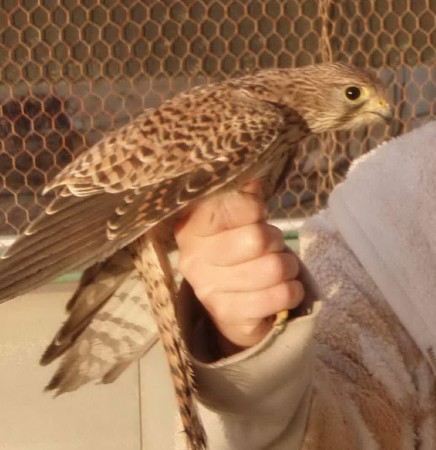
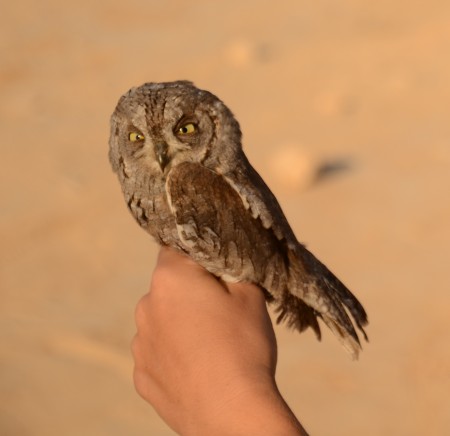
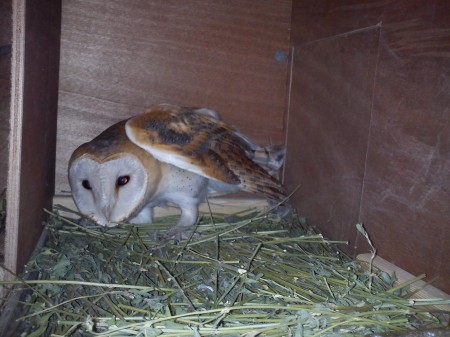
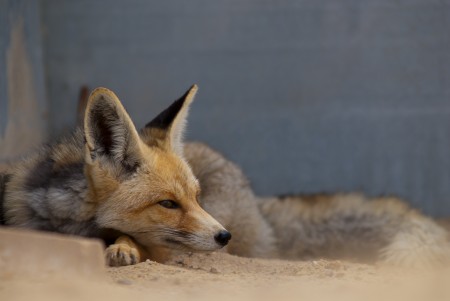
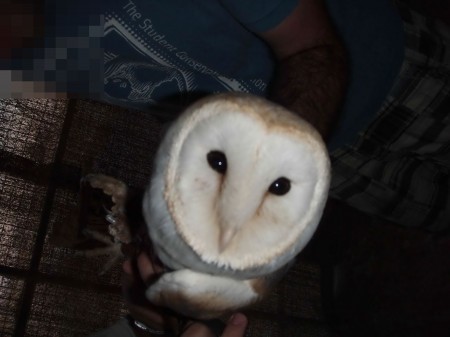
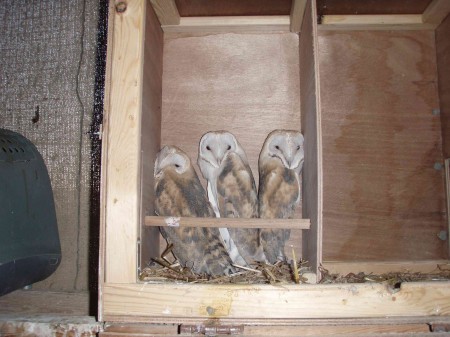
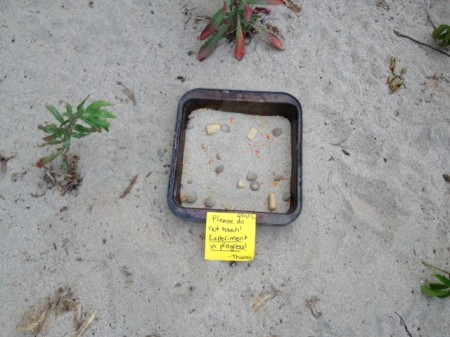
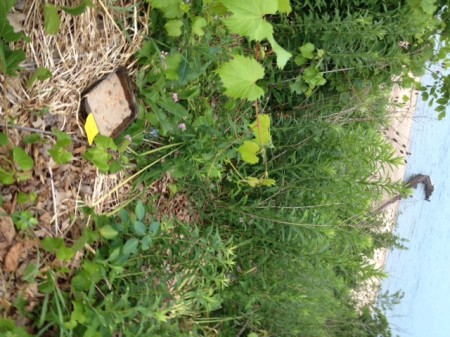
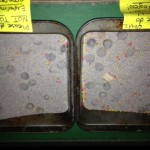
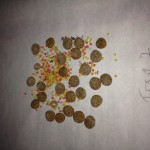
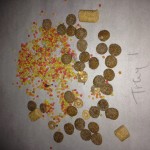
very nice!